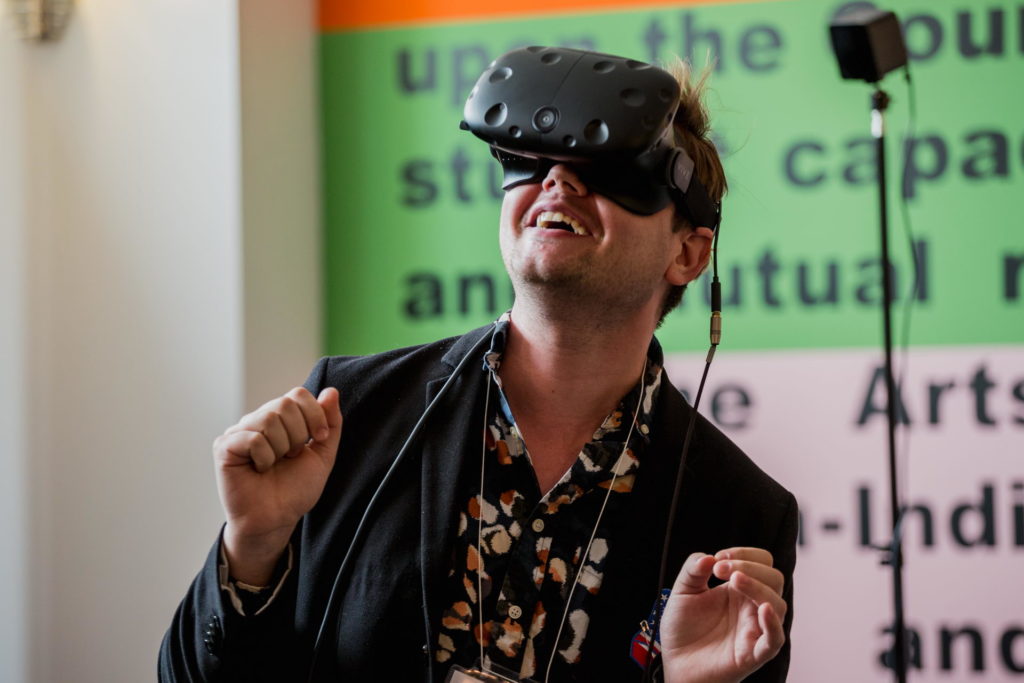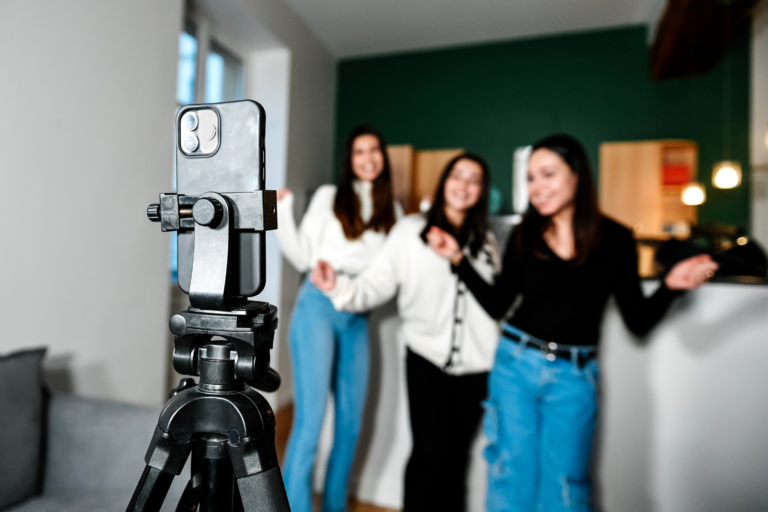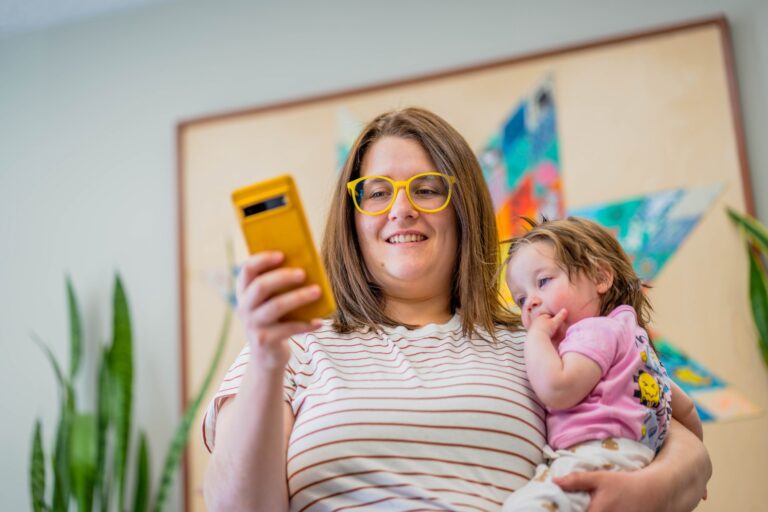Exploring new frontiers at UBC’s Emerging Media Lab
There is a place at UBC where, without ever leaving a room, you can experience a stroll through Stanley Park, conduct an orchestra and even get a walking tour of the brain’s complex neuroanatomy.

There is a place at UBC where, without ever leaving a room, you can experience a stroll through Stanley Park, conduct an orchestra and even get a walking tour of the brain’s complex neuroanatomy.
Welcome to the Emerging Media Lab (EML) —a unique space where students, faculty and staff come together across disciplines to push the boundaries of technology and create new tools for learning.
Established in 2016, the EML operates as a solely experimental space where, as its technical supervisor Kirk Karasin puts it, “Participants have the right to fail.” It’s a resource open to faculty and students from all disciplines, where the only prerequisite is a desire to explore new applications for emerging media, from virtual reality (VR) and augmented reality (AR) to brain-computer interface and artificial intelligence.
“It isn’t part of a specific faculty or department,” says Saeed Dyanatkar, EML lead and executive producer of UBC Studios. “The EML is for everyone.”
Currently eight faculty in residence, from an array of UBC faculties and departments, are collaborating with EML on innovative teaching and learning solutions. Most projects are proposed by faculty members, but the tools themselves are developed by teams of undergraduate student volunteers and Work Learn students, with support from industry partners and EML staff.
Tools at their disposal include AR HoloLens headsets—donated by Microsoft—as well as VR glasses from Oculus Rift and HTC Vive. And as all the projects are non-credit and purely extracurricular, developers have free rein to test and explore the technologies.
“We have, in many disciplines, really creative and innovative faculty who want to be able to experiment with leading-edge technology that they think has potential to enhance their academic domain,” observes Simon Bates, associate provost of teaching and learning. “In the spirit of innovation, they want to do experiments and learn how these technologies can support them, or support student learning. And the EML gives them a space to do that.”
[big_feature_image src=”http://news.ubc.ca/wp-content/uploads/2019/03/IMG_8609B.jpg” video_id=”R2UGLucAz5s”][/big_feature_image]
Virtual conducting
Among those faculty members is Jonathan Girard, director of orchestral activities and assistant professor of conducting, who used the EML to take a 360-degree video of a UBC Orchestra performance. Now, Girard is taking things one step further, building a virtual conductor’s podium with his Interactive Orchestra project.
“Opportunities to learn to conduct an orchestra have always been limited by the huge investment of time required from the other musicians needed to play and perform with conductors in training,” says Girard. “VR is an amazing opportunity to allow young conductors to experience many previously irreproducible aspects of conducting an orchestra, specifically, how to compensate for the natural time delay between the conductor’s beat and the first sound of the performers.”
His vision is a VR simulation in which conductors can practice controlling the speed of a piece by beating with a physical wand, or baton. As they conduct, they will also see a “drawing” of their gestures. Begun in September, the project is already at a stage where users can conduct and control the speed of an audio track of O Canada.
Serena Chao, 23, an undergraduate student in electrical engineering and amateur pianist, is coordinating the Immersive Orchestra team, which also includes students from the departments of computer science, physics, statistics and psychology.
“It’s really a learning experience for everyone involved,” she says. “It’s very unique, the position that the EML has, where they can tie a bridge between different departments embracing what can be done with tech. It’s great working on a multi-disciplinary team, because people all bring a very different lens to a project.”

Holographic brain
While Girard is working on developing a tool for musicians, projects developed through the EML span a wide range of disciplines, from geography and physics to psychology and medicine. One of these is the HoloBrain, a ground-breaking AR model of the brain conceived by Dr. Claudia Krebs, a professor of anatomy in UBC’s faculty of medicine and faculty in residence at the EML.
Dr. Krebs had spent years developing 3D digital reconstructions of the brain, but even she was amazed when she put on the HoloLens.
“It blew my mind,” she says. “I’ve spent my career working on the anatomy of the brain and how to teach it, and all of a sudden, what was in my head was outside of my head, and people could see it. I could walk around and I could show them exactly what I meant in this 3D object.”
Dr. Krebs is currently updating the HoloBrain with more up-to-date MRI scans and adding the capability to see brain activity in real-time. Much of this work now takes place in The HIVE (Hackspace for Innovation and Visualization in Education), an initiative of the faculty of medicine to develop digital teaching tools in medicine, that works closely with the EML.
Providing opportunities for the kind of free, interdisciplinary collaboration that takes place at the EML, says Dr. Krebs, “is really the future of what the university should be.”
Bates agrees. “Nowadays, problems don’t fit into neat disciplinary boundaries,” he says. “There’s a recognition that you need experts from many, many different domains to solve some of the really big challenges.”
In addition to assisting collaborations within UBC, the EML also connects with researchers and teachers at other institutions throughout the region, through Emerging Media BC. While UBC isn’t alone in exploring this kind of cross-collaboration in the digital space, it is one of the first institutions to embrace it at this level.
“Other universities are catching on and also doing major investments in innovation labs, but for now, I think UBC’s kind of ahead of the curve,” says Dr. Krebs. “We’d like to stay there.”
Members of the public who would like to see the Emerging Media Lab for themselves are welcome to do so when the lab hosts an open-house Mar. 26. More details available here.



